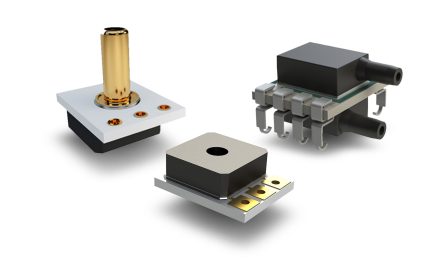With population growth and urbanization continuing at a rapid pace, the demand for food and water is expected to rise sharply in coming decades. At the same time, conventional irrigation methods like flood and sprinkle irrigation have proven to be highly inefficient and wasteful of scarce water resources. As a solution to these issues, many countries in the MENA region have started adopting modern drip irrigation systems on a large scale to boost water use efficiency and agricultural production.
Benefits of Drip Irrigation
Drip irrigation, also known as trickle irrigation, delivers water directly to plant roots through a network of valves, pipes, tubing, and emitters. This allows water and fertilizer to drip slowly to the roots of plants at low volumes but at frequent intervals according to the plant’s specific water requirements. The key benefits of drip irrigation over traditional methods include:
Water Conservation – Drip irrigation systems can help reduce water usage by as much as 50-90% compared to flood or sprinkle irrigation. Since water is applied directly to the root zone, losses from evaporation, deep percolation and surface runoff are minimal. This makes drip ideal for water-scarce regions.
Increased Crop Yields – Applying water uniformly and precisely according to plant needs ensures optimal soil moisture content and better fertilizer efficiency. This supports higher photosynthesis rates and faster plant growth, leading to significantly higher crop yields.
Cost Savings – Over time, drip irrigation helps save costs associated with excessive water and fertilizer usage. Labor costs are also reduced since it is easy for a single worker to manage large agricultural areas.
Less Risk of Disease – Keeping foliage dry by watering only the roots helps reduce formation of favorable conditions for fungal and bacterial diseases in crops.
Adaptability – Drip systems can be used for a wide range of crops in orchards, vineyards, row plantations as well as vegetable gardens and greenhouse farms. It is suitable for various soil types including sandy and saline soils.
MENA’s Shift to Drip Irrigation
Countries across the MENA region have recognized drip irrigation as a critical solution to enhance water security and agricultural sustainability. Israel has been a pioneer with over 90% of its irrigated farmland using drip systems. Countries like Saudi Arabia, UAE, Jordan, and Morocco have also aggressively promoted adoption of drip irrigation in recent years through awareness programs, subsidies and financing support. Some key developments include:
– Saudi Arabia aims to cover 50% of its irrigated area under drip systems by 2030 as part of its ‘Vision 2030’. Over $10 billion has been invested to provide farmers low-interest loans and install 500,000 hectares of drip irrigation networks so far.
– In Morocco, the government has distributed over $500 million in subsidies since 2008 to increase the area under drip irrigation from 20,000 hectares to 1 million hectares currently. This has doubled wheat and fruit yields nationally.
– The UAE has successfully converted 95% of farms in Al Ain region to drip through partnerships with global irrigation giants like Netafim and NaanDan. This has played a big role in transforming the region into a major agricultural producer.
– Jordan is looking to more than double its irrigated area to 250,000 hectares by 2025 primarily through incentives for adopting drip systems in greenhouse cultivation of tomatoes, cucumbers and other vegetables.
Challenges in Implementation
While the benefits of drip irrigation are well recognized, transitioning traditional farmers to new precision irrigation methods also poses some implementation challenges:
– High Initial Capital Costs: Installing drip systems can be an expensive proposition for smallholder farmers due to costs of purchasing drip pipes, filters, control valves and pumps. Access to low-cost financing remains a hurdle.
– Lack of Technical Know-How: Farmers need to be educated in methods of designing optimal layouts, operating and maintaining new drip equipment, repairing leaks and clogs. Loss of skills in flood irrigation also takes time to transition.
– Salinity and Blockage issues: Over-fertilization, poor quality water sources and lack of filtration can easily clog emitters or cause pipe damage over time from salt build-up, requiring frequent flushing and replacement of parts.
– Change Management: Generations of farmers used to traditional ways may resist transitioning to a new concept of scientific soil-plant moisture management. Strong extension programs are critical to drive acceptance.
– Adaptability Issues: Drip is not always suitable for some crops and soil types. Integrated solutions need development for undulating lands and water sources located at elevated locations requiring pumping.
Addressing these pressing challenges will be key to fully realize the immense potential of drip irrigation in revolutionizing sustainable agriculture across arid countries of the Mena Drip Irrigation System region in the 21st century. With synergistic efforts between farmers, agribusinesses, non-profits and governments, this transition is well within reach.
By embracing modern micro-irrigation techniques, MENA nations have an opportunity not only to overcome water scarcity issues but also significantly grow their own food production to enhance self-sufficiency and food security. Drip irrigation is promising to truly convert their desert regions into green oases in a responsible manner. While results so far have been encouraging, a long-term strategic vision, policies supporting farmer adoption, and continuous innovation will be needed to make drip irrigation a game-changing solution at scale. The rewards of higher economic growth, greater sustainability, empowered communities and increased climate resilience make pursuing this path well worthwhile.
Note:
1. Source: Coherent Market Insights, Public sources, Desk research
2. We have leveraged AI tools to mine information and compile it




